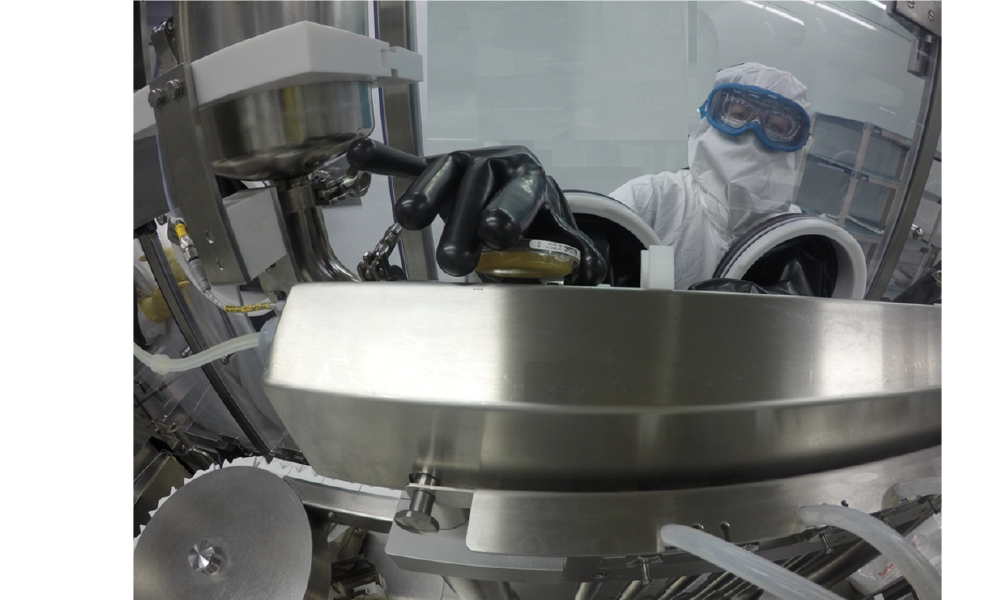2022 ISPE Facilities of the Future Conference: Emerging Technologies

Two sessions at the 2022 ISPE Facilities of the Future Conference in early February captured varied views of emerging technologies in the pharmaceutical industry, and the industry’s work to embrace these technologies.
Sau (Larry) Lee, PhD, Deputy Director of Science Chair, Emerging Technology Program, Office of Pharmaceutical Quality/CDER/FDA, provided an update on the FDA’s Emerging Technology Program (ETP) during the morning session, “Benefiting From Emerging Technologies” on 2 February.
In a presentation titled, “Experience in Pharmaceutical Innovation: US FDA Perspective,” Lee provided some background and the current status of the ETP. The program was established in 2014 to promote and facilitate adoption of innovative approaches to pharmaceutical product design and manufacture, including work to date in small molecules, therapeutic proteins, and multiple products. In 2021, the program received 13 proposals and approved 10, held a total of 35 sponsor meetings, and conducted six site visits.
The program faces several challenges as it continues to grow, Lee said: an increased workload limits the program’s ability to support all new technologies, industry members want more dedicated time from the program, and team members left FDA. In response, a process has been implemented to move forward, including the ETP 2.0 model and road map for implementation, which are currently being applied.
Framework for Regulatory Advanced Manufacturing Evaluation (FRAME) has been launched as a multiyear initiative to take a systematic and phased approach to develop a regulatory framework in support of new technologies. Now in its third phase, FRAME seeks inputs on gaps and pain points to help inform FDA thinking before implementation begins. Lee said that the program will sync input, eliminate hurdles, clarify expectations, and harmonize internationally. A draft white paper will be released for public comment.
mRNA Future and Present
In the presentation titled “mRNA Technology: Beyond COVID-19 Vaccine,” David Estapé, PhD, Technology Manager, Biotechnology at CRB Group, discussed mRNA’s potential. Huge impact is expected, he noted. Two types of facilities can use mRNA: large facilities such as those that have produced COVID-19 vaccines and can serve other needs for large amounts of material, and facilities for personalized medicine where small quantities are needed multiple times per year.
Questions to consider: Will the industry use current facilities to provide mRNA products? Or will the industry need to consider different approaches in facilities? Estapé noted that mRNA facilities need to be high-throughput facilities, requiring high integration of all areas, with automation/digitalization playing a key role.
Facilities of the future will need to be flexible and adapt to the needs of producers, Estapé predicted. The greater efficiency of mRNA compared to typical monoclonal antibodies (mAb) means that about 1,000 times less material is needed, he said. And mRNA production speed can be two to four days, compared to two weeks for mAb. As a result, mRNA facilities should be small, capable of high throughput.
When it comes to GMPs for mRNAs in the EU and from the PIC/S perspective, there is ambiguity so far, he said. For instance, the European Commission's EudraLex Volume 4–Good Manufacturing Practice (GMP) guidelines does not see mRNA as a typical ATMP, whereas the new Pharmaceutical Inspection Co-operation Scheme (PIC/S) Annex 2A for ATMPs addressed mRNA for the first time.
Estapé reviewed the risk profile for mRNA, noting that the cell-free, enzymatic processes mean a low risk of microbial contamination or bioburden, and aseptic or sterile processing is not required. There are no viral vectors and thus no associated risks to patients, unlike with adeno-associated virus or lentiviral vectors.
It is up to the industry to discuss and find prescriptive GMPs, understand the risk profile, and make a decision based on the risk. The speed of the move from R&D to commercial manufacturing for COVID-19 vaccines raises some questions and areas for improvement:
- Process/product optimization: storage temperatures, formats, etc.
- Scale-up versus scale-out
- Single-use versus stainless steel and reuse of equipment
- Level of automation versus manual intervention
Oliver Hennig, Senior Vice President, Operations, BioNTech SE, shared insights into the company’s COVID-19 vaccine development during the session. After providing background about the company’s development and emphasizing the importance of working with collaborators, he discussed why mRNA is a beneficial approach for vaccines.
The arrival of COVID-19 brought change: before then, there was no mRNA commercial product on the market, but several companies—including Bi-oNTech—had significant experience with mRNA. He noted that mRNA is a logical choice for vaccines because it does not require the addition of adjutants or the use of a viral vector for administration; it is non-integrating into DNA and non-infectious, unlike attenuated live virus and DNA-based vaccines; it is high purity and animal-free; and it has highly scalable production, which is the most important factor. Hennig described some differences in the use of mRNA for oncology treatments, which can be highly individualized.
He traced some of the steps that were followed to produce the vaccine quicky and in the necessary volume, including distribution challenges during the early months of the pandemic. Shortages of materials such as gloves affected sourcing; volume was needed in proprietary raw materials for mRNA production; CMOs and suppliers from around the world worked on purification, concentration, formulation, and fill-finish; and warehouses had to be at -80ₒC for hundreds of millions of doses. The severe supply chain issues impacted the work as well; for mRNA production, detailed and long-term capacity planning was required prior to regulatory approval; reporting, production, and transportation had to be harmonized across regions; capacities and mate-rials for formulation and filling were restricted; and distribution planning and fulfilment of local requirements had to be achieved. All of this was undertaken with commitment to the highest safety and quality standards to produce more than 3 billion doses, with ongoing work in continuously improving the supply chain.
Facilities of the future will need to be flexible and adapt to the needs of producers.
Despite the challenges, the need to produce so many batches consecutively with so many partners gave the company the ability to achieve highly accelerated readiness and significantly faster learning than in a “normal” setting, Hennig noted. As for variants: the technologies and experiences are there and available to address these. The ability to employ technologies where they could work on the shop floor brought very fast learnings and will inform how they make mRNA in the future.
New Technologies
An afternoon session on 2 February continued to explore emerging technologies, focusing on concepts promoting rapidly advancing manufacturing technologies that are enabling improvement in quality and process robustness, supply chain agility, and reduced costs.
The first presentation in the session was “Domestic Infrastructure and Capacity: The Pandemic Impact,” and had provided input from Thomas Warf, Director, Manufacturing, Facilities and Engineering, with the Department of Health and Human Services, Office of the Assistant Secretary for Preparedness and Response (ASPR)/Biomedical Advanced Research and Development Authority (BARDA), and Arlene Joyner, MS, PMP, CSSGB, Branch Chief CDMO Network, PCI/BARDA/ASPR/HHS.
BARDA was part of the US government’s Operation Warp Speed within HHS and with a mission of working on both COVID-19 and future pandemics, Joyner said. Tasks included working on the ultra-cold storage needs early in the COVID-19 vaccine development process and distribution to support an entire country, which required significant coordination and support, as well as capacity issues for fill, label, and distribution with CMOs in early 2020.
Warf discussed collaborations in vaccine manufacturing consumables, noting that it was understood from the start, and from previous pandemic experience, that obtaining the needles and syringes—in addition to other materials—to administer the vaccines in development was going to be a key issue. So it established partnerships with various companies to provide these materials and others, including vials, and addressing issues with facilities including fill-finish impact on other medicines when operations were changed over to vaccine production, and supply chain surveillance of bottlenecks in raw materials, consumables, and vials. Joyner said that they also arranged for reservation contracts to obtain space in production facilities for risk mitigation to provide capacity in case of a disaster at a filling facility.
BARDA has also been preparing for future pandemics with the Industrial Based Expansion program, which is planning for essential vaccine inputs, including raw materials such as nucleotides, lipid nanoparticles and synthetic cholesterol, chromatography resins, and cell culture media; program management; and partnering with the US Department of Defense. For vials and consumables, it is working on specific materials including single-use assemblies, filtration equipment, and sterilization capacity. For end-to-end capability, it is working on biosafety level 1 and 2 lines; drug substance/drug product storage; and labeling, inspection, and packaging capacity.
Another issue for the future is onshoring. Many products were not available domestically and when borders are closed or other countries decide to keep resources within their borders, it can present problems.
Digitalization
A second presentation in the session, “Elements of Effective Digital Technologies,” looked at the importance of digitalization and Pharma 4.0™ to facilities. Yvonne Duckworth, PE, Senior Automation Engineering and Digitalization Lead at CRB, gave an overview of digitalization and Pharma 4.0™, noting that digital technologies require a robust control system and network infrastructure for support. She gave some history of digitalization and explained about the technologies in Pharma 4.0™.
Recommended starting steps for building a digital strategy include assessing the current digitalization level, determining the desired level, and creating a road map for implementation. As part of this process, an interview for “pain points” will help with input from manufacturing, filling, packaging, warehouse, quality, maintenance, and automation/IT. She suggested being practical, seeing where there is value, and considering what you are trying to fix.
To build the road map, consider what technologies are available, current industry trends, costs for initial investment and recurring costs, return on investment, which vendors can provide services, and which integrators can implement.
Also consider the risks (security and operational), what changes to the workforce may be needed (more/fewer workers, training), opportunities to test and learn at an existing site, a phased approach, and impact on design (layouts, network infrastructure, and equipment skid specifications).
Sumit Verma, Senior Vice President, Commercial Manufacturing at Iovance Biotherapeutics, Inc., provided some case study details from Iovance about its road map for implementing Pharma 4.0™ at its the cell therapy center. The facility is positioned for more scale-up and to execute a digital technologies road map, including flex and core workstations, quality control, supply chain, and scalable workforce in areas including manufacturing; quality assurance and quality control; supply chain; manufacturing, science, and technology; and IT.
The next steps for systems integration, digitalization, Pharma 4.0™, and automation strategy will be determining the approach for the facility, identifying systems to be included in integration, and defining the integration strategy. The company is taking a phased approach and building a robust network infrastructure, including a business corporate network, industrial controls network, and other elements. The manufacturing execution system will include electronic batch records, review and release by exception, SOPs, equipment and warehouse management, and order management.
Disclaimer
This is an abridged, unofficial summary of presentations by regulators and government agency representatives during sessions at the 2022 ISPE Facilities of the Future Conference that has not been vetted by any regulatory or government agency. The content is an informal and brief synopsis of the presentations and does not represent official guidance or policy of any regulatory agency or government.










